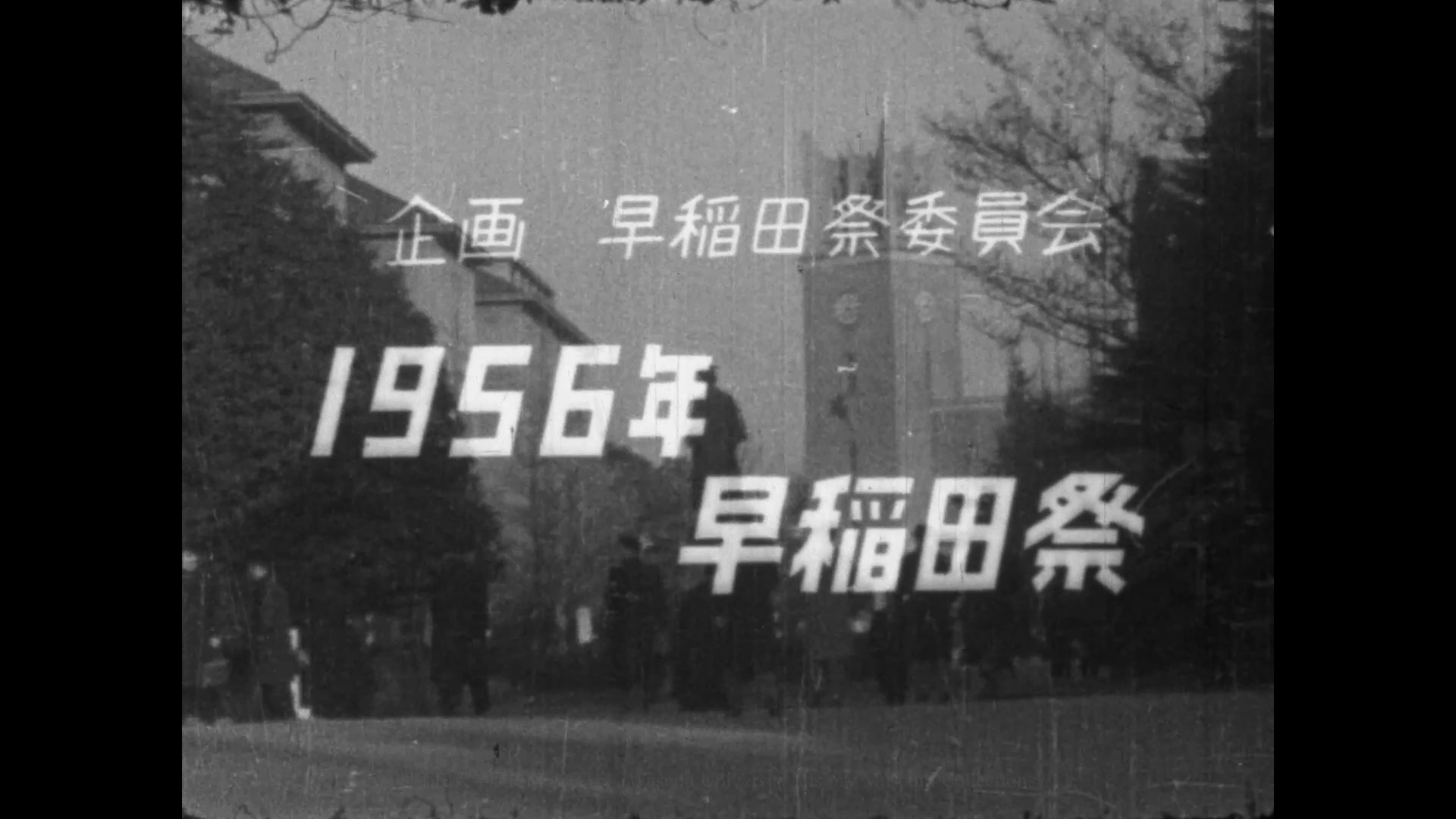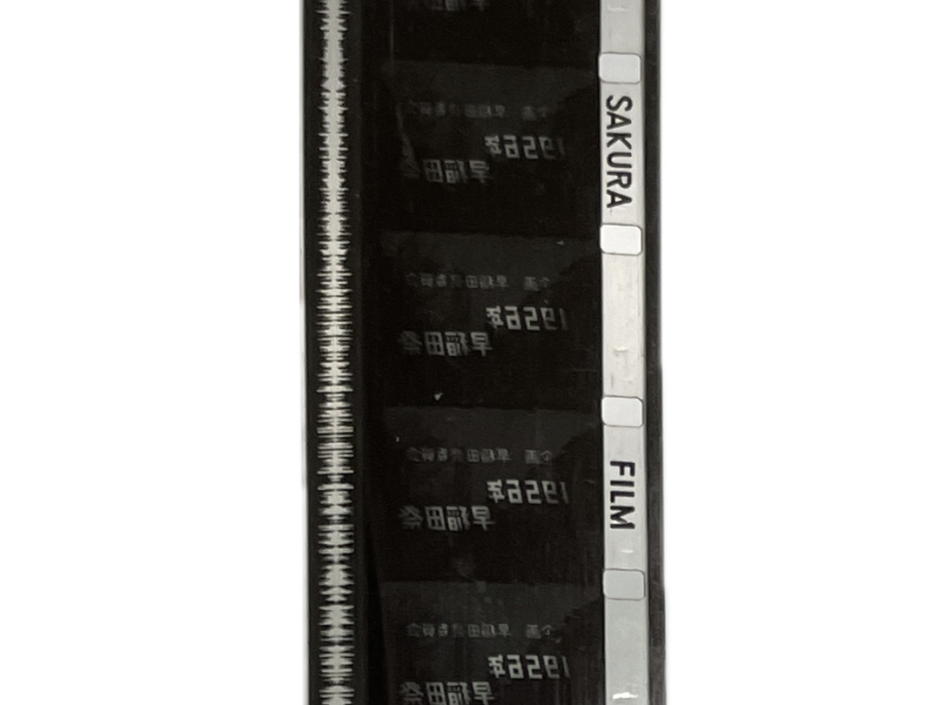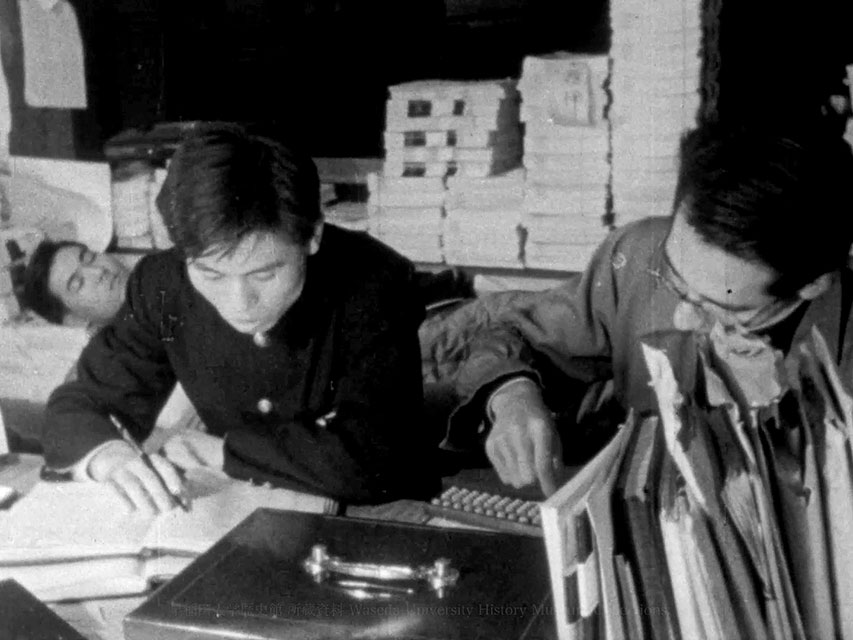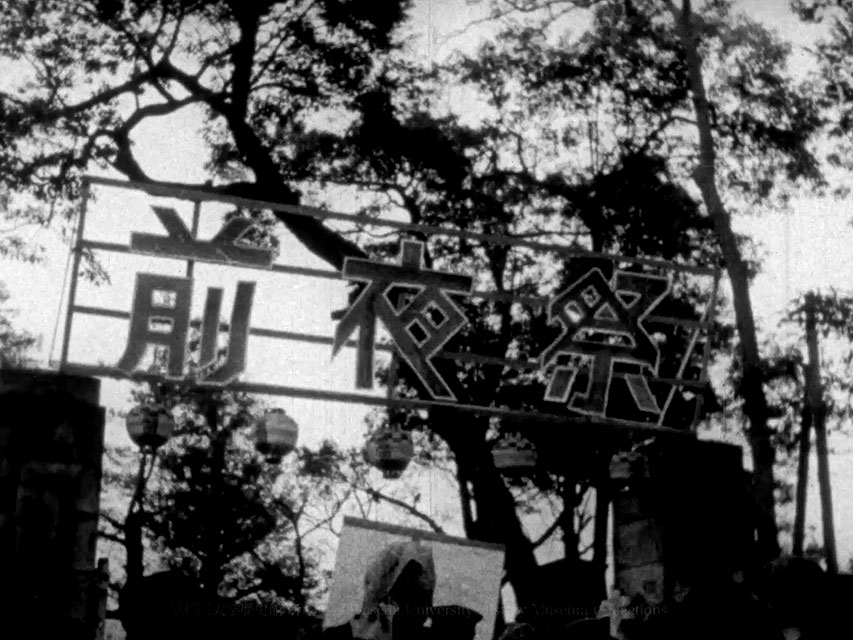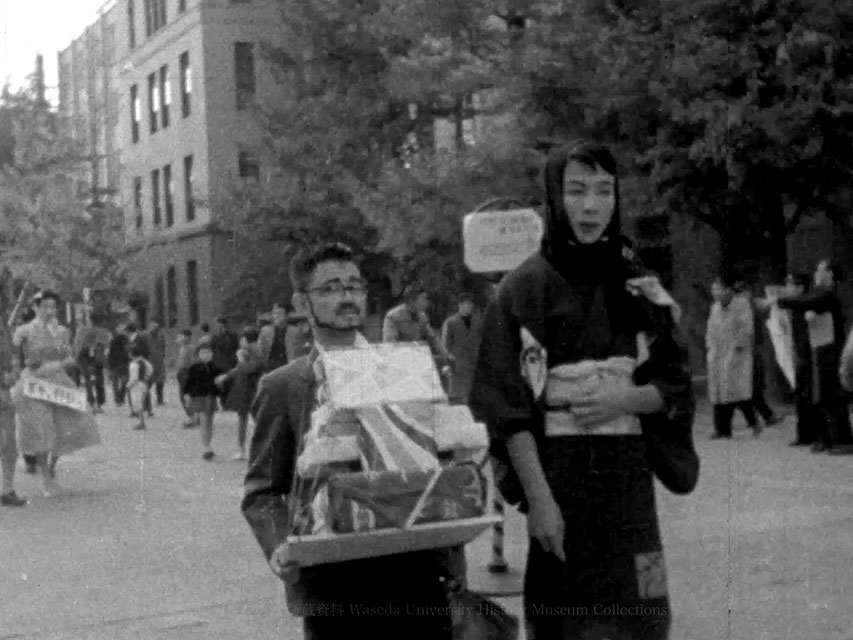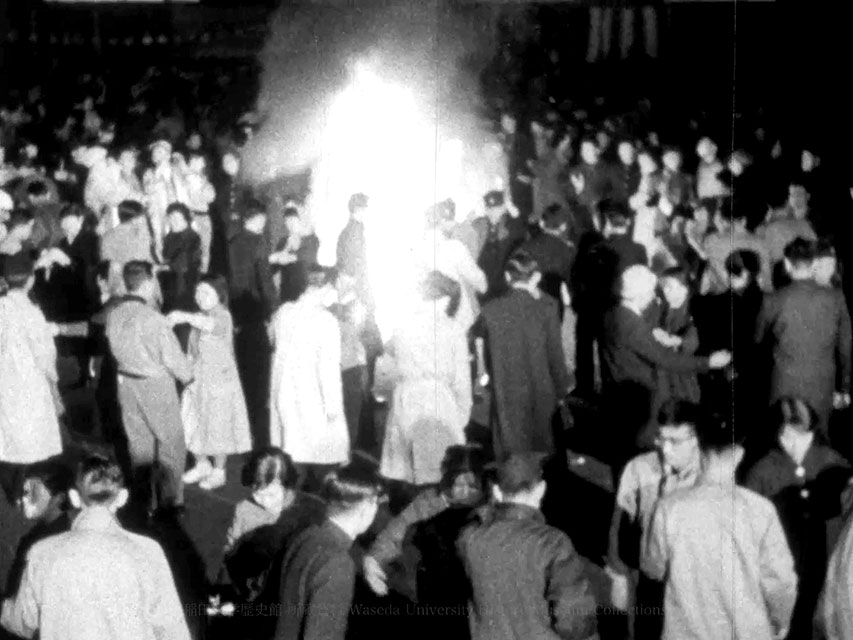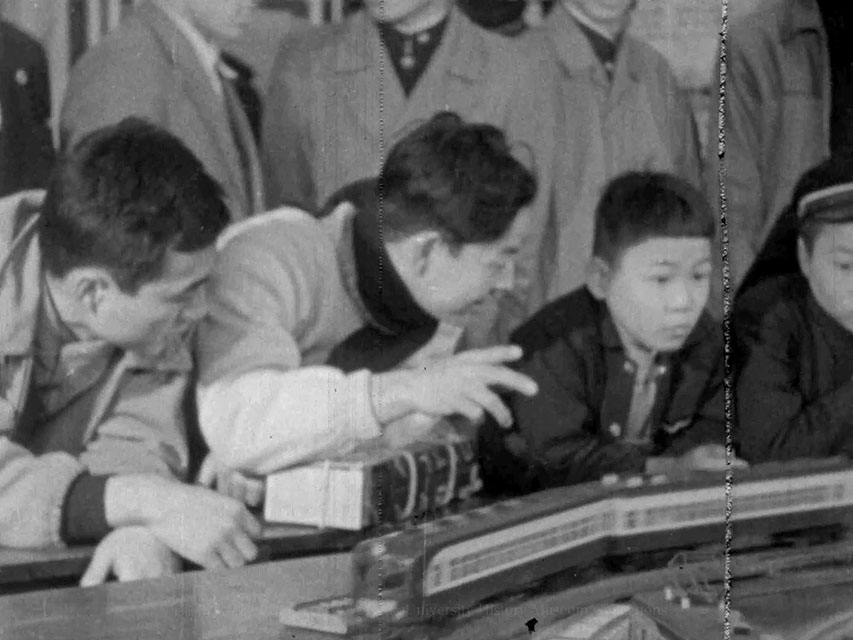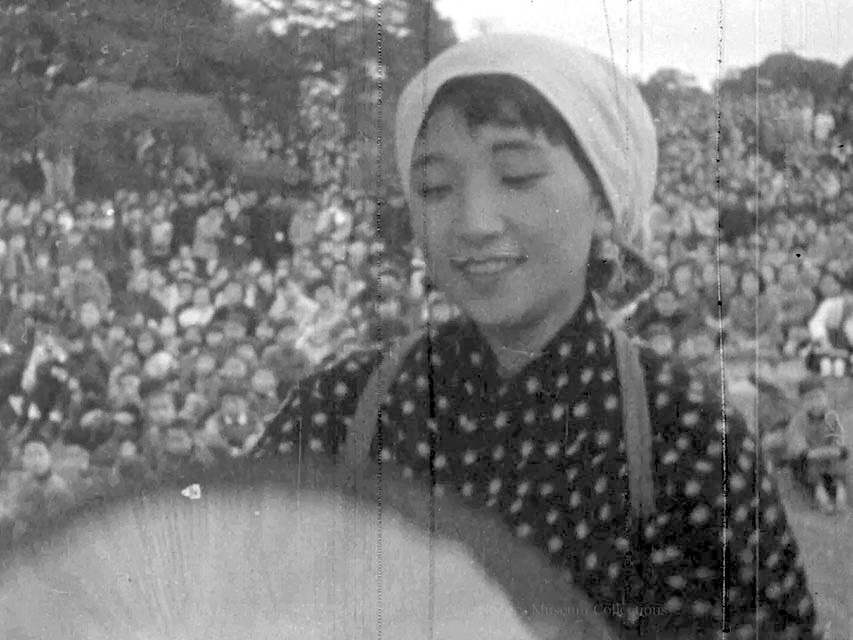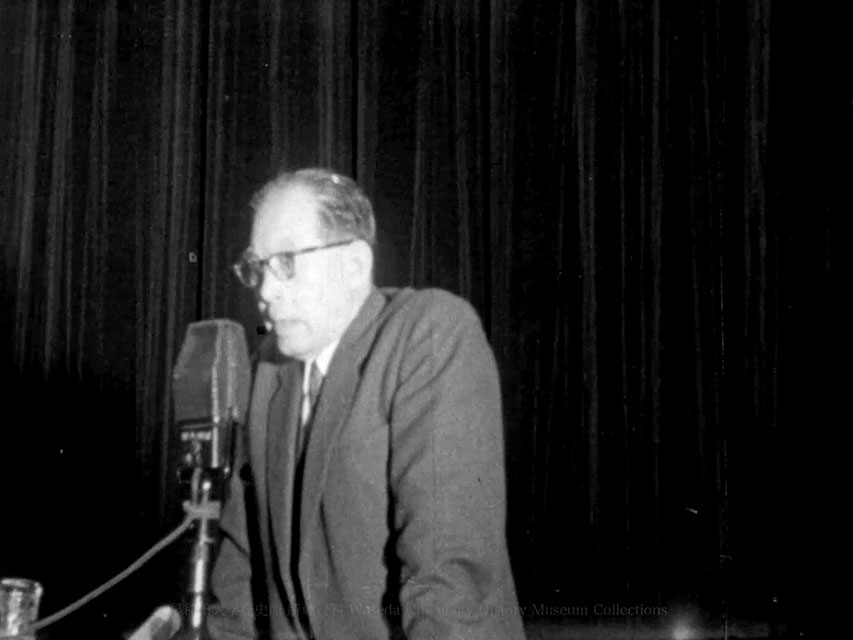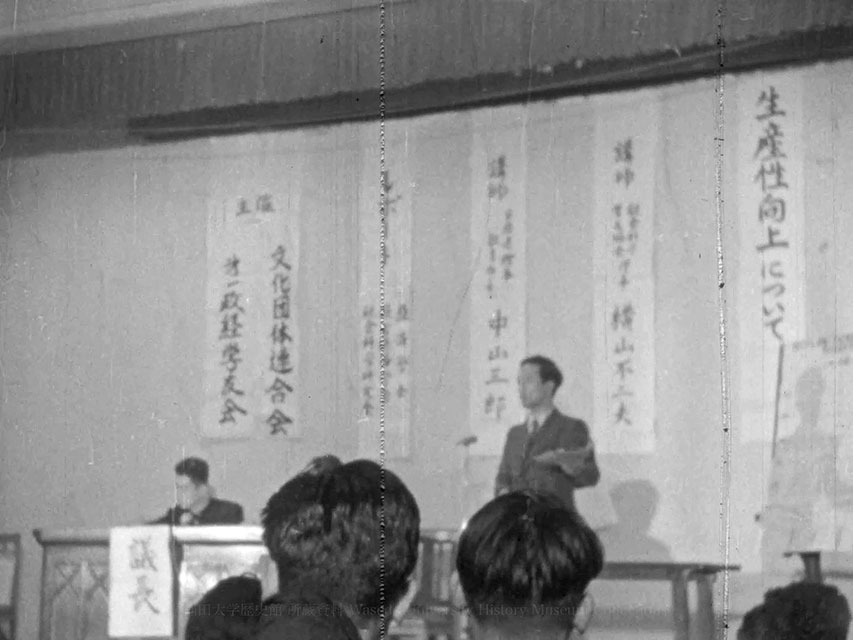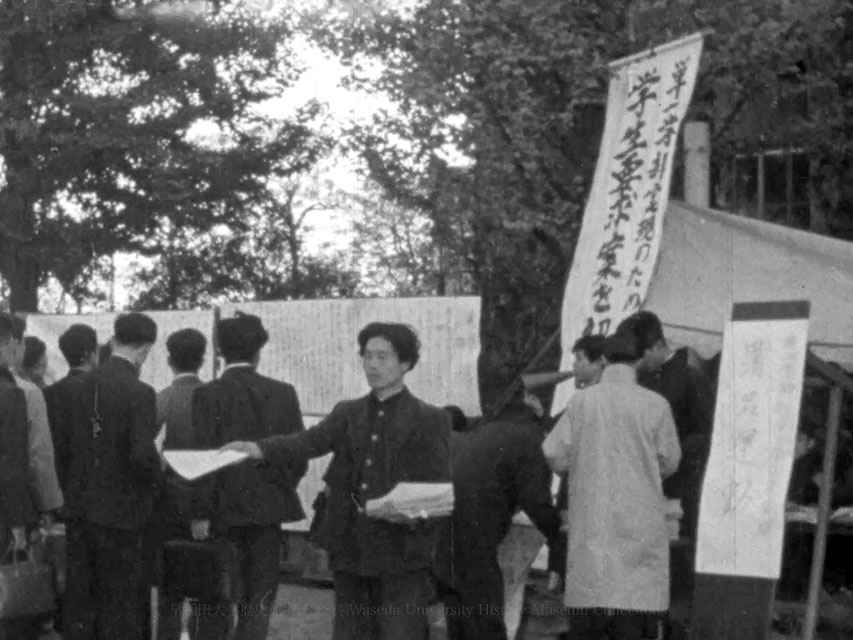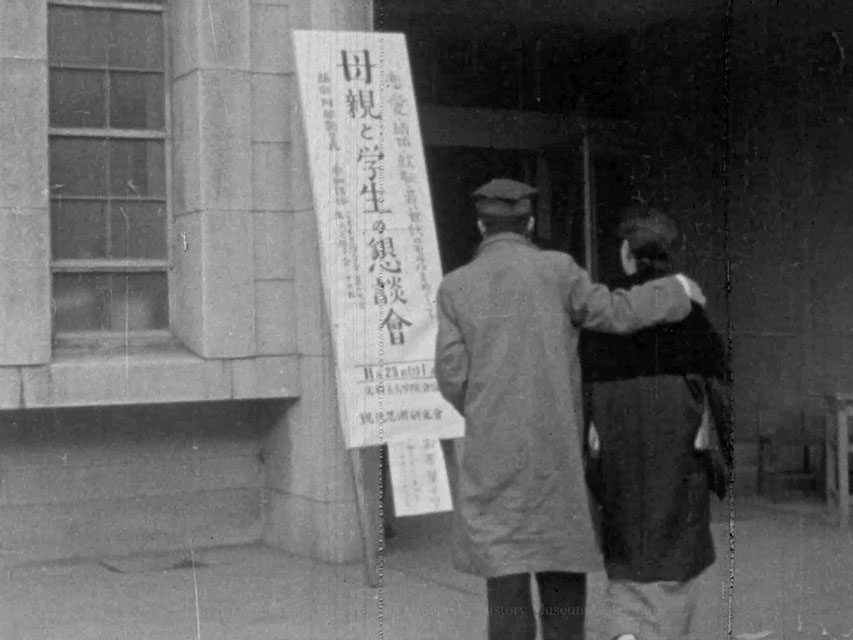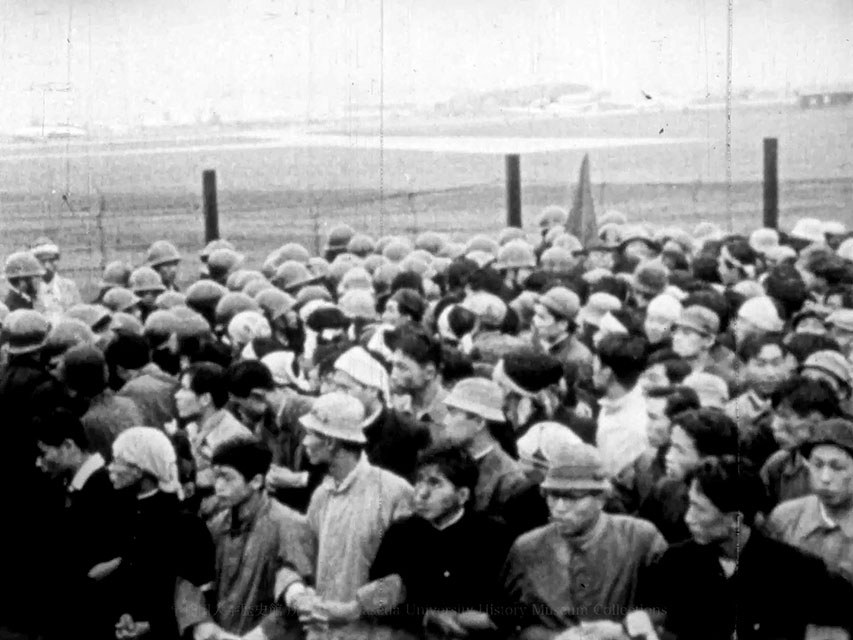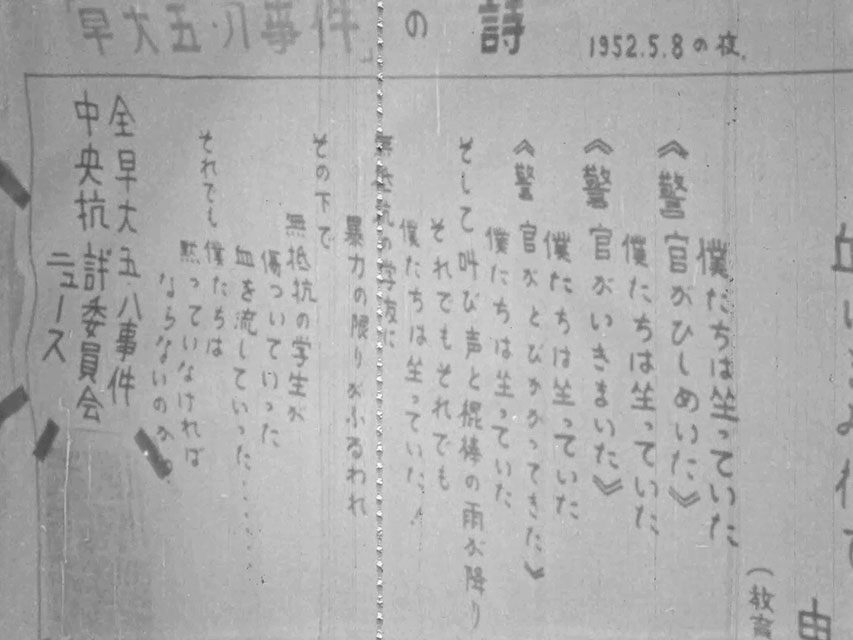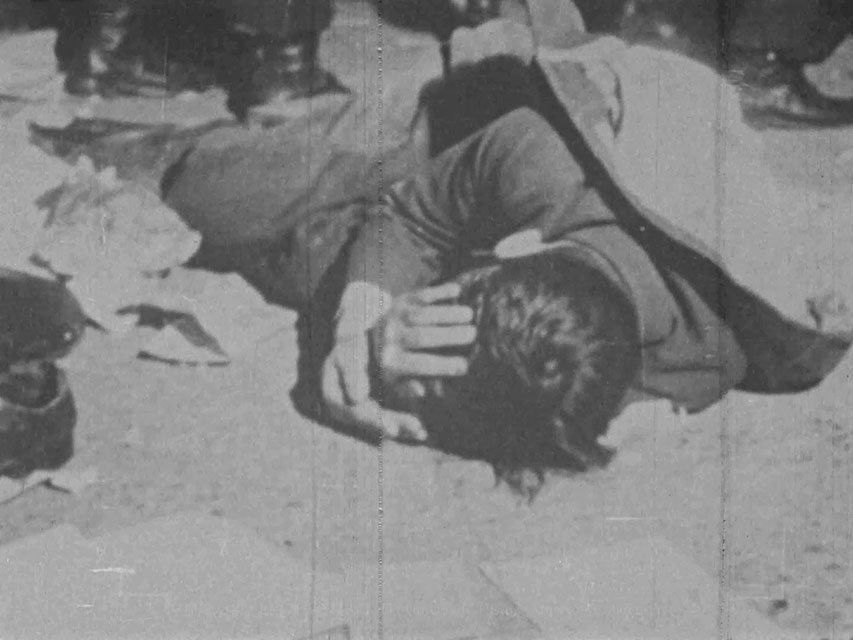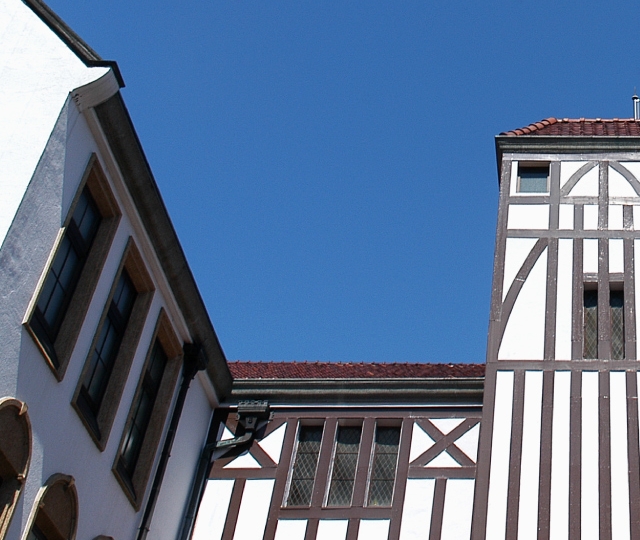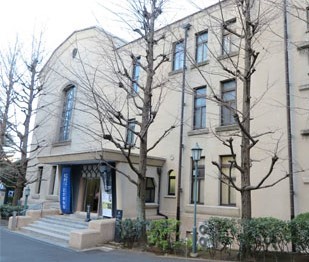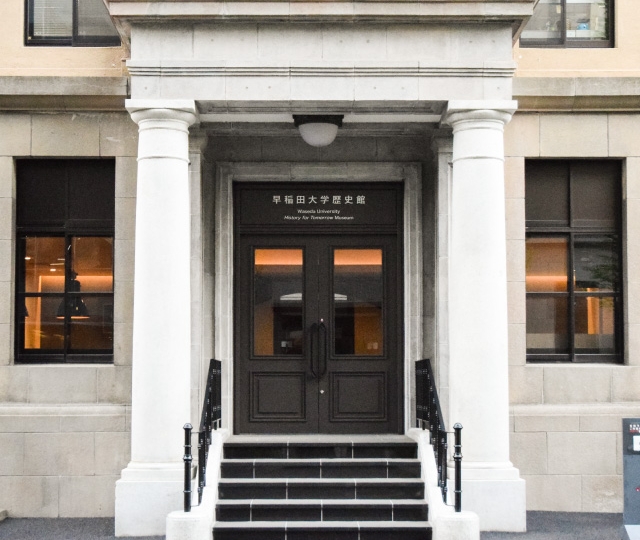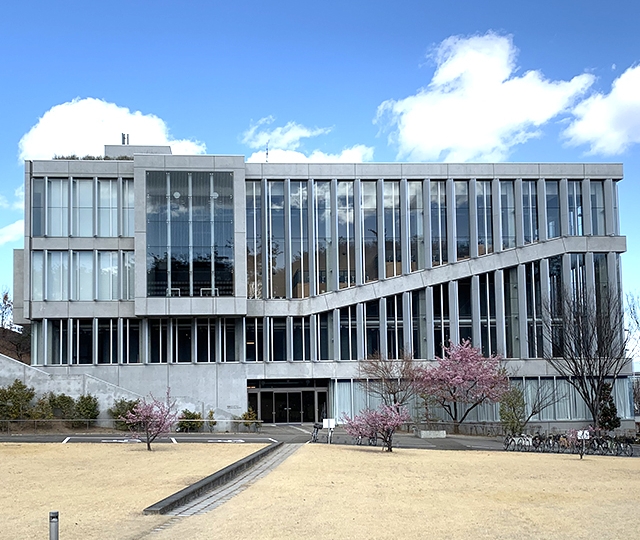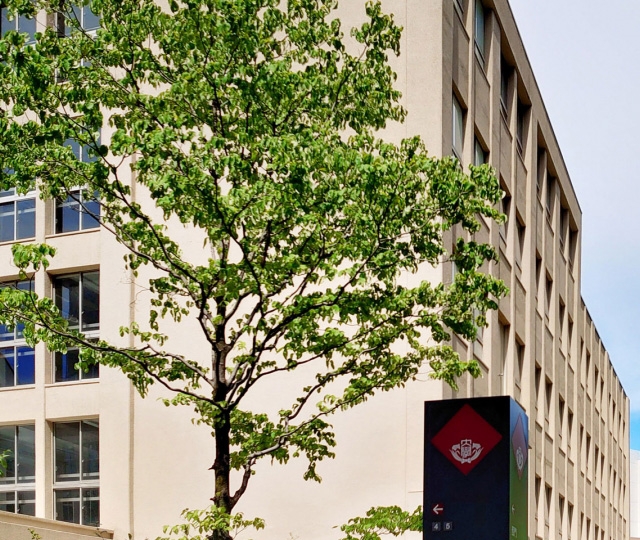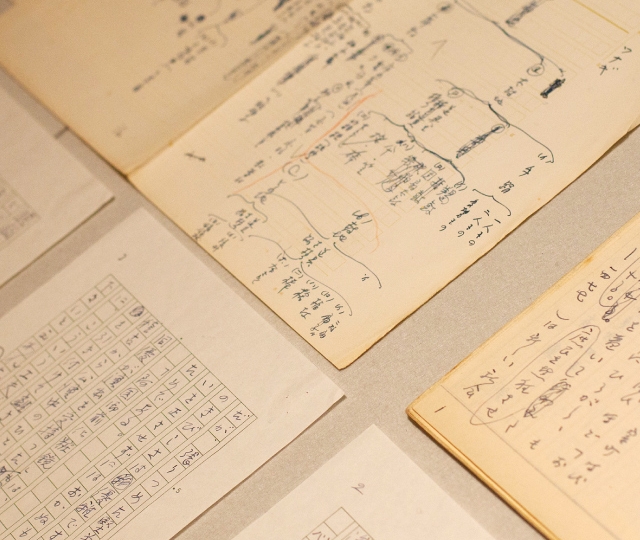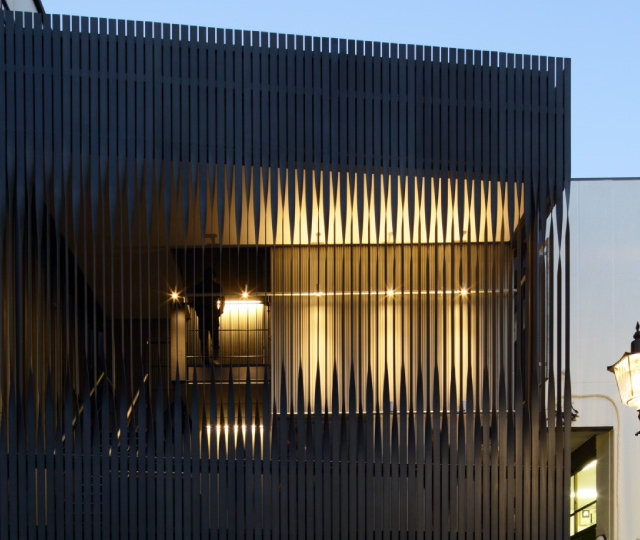- Featured Article
Digitized Footage of the 1956 Waseda Festival: Made Possible by a Generous Donation
Wed 30 Oct 24
Wed 30 Oct 24
Tokyo, Japan – The Waseda University History Museum (Director: Prof. Masayuki Manabe, Faculty of Letters, Arts and Sciences) has digitized its archival 16mm film footage titled “1956 Waseda Festival” and made the complete footage available to the public on YouTube.
The film, a 16mm reel, was originally donated by the Tōmon Scenario Kenkyūkai in 2012. Until recently, the footage was preserved without any means for playback. Thanks to a generous donation from alumnus Mr. TOMOGANE Takao, former member of the Tōmon Scenario Kenkyūkai and current Waseda University staff, the Museum was able to enlist the expertise of a specialized vendor. The footage, well-preserved despite minor perforation issues that have since been restored, has been converted into a 17-minute digital video with both visual and audio content.
Resource Information
Collection of Waseda University History Museum Archives
Collection Name: Waseda Festival Film donated 2012 by Tōmon Scenario Kenkyūkai (2012年度稲門シナリオ研究会寄贈早稲田祭関係資料)
Item Number: 1
Title: [16mm Film] 1956 Waseda Festival, Maintained by the Finance Department, Secretariat, Waseda Festival Committee (〔16ミリフィルム〕1956年早稲田祭 早稲田大学早稲田祭委員会書記局財務部保管)
Date of Creation: 1956
Creator/Donor: Tōmon Scenario Kenkyūkai (稲門シナリオ研究会)
Accession Number: 201202200001
Notes: Digital data delivered on 2024/09/17
Publication Notes
- This video is available exclusively on YouTube. Redistribution or republishing on other platforms or services is strictly prohibited.
- The material is not available for in-person viewing, duplication, or other forms of access at the History Museum’s Higashifushimi Archives.
- Portions of the audio, specifically background music, have been removed due to potential copyright concerns.
Overview
Kengo Hayashi, Staff Member at Waseda University History Museum (Graduate School of Letters, Arts and Sciences, Waseda University, Master’s Program)
This film documents the 1956 Waseda Festival, a student-organized event. After Japan’s post-war education reform, new university systems emerged, and by the 1950s, unified university festivals were held nationwide. At Waseda University, the momentum for a unified festival grew, leading to the first official Waseda Festival in 1954. This footage provides a comprehensive record of the 1956 Waseda Festival, from the planning stages to the event itself, and is an invaluable visual resource for understanding the character of the festival during this period.
The 1956 Waseda Festival began with a pre-festival celebration on November 20, followed by five days of events from November 21 to November 25. Key attractions included a costume parade, folk dances, and the “Firestorm” event. The auditorium hosted various plays and choral performances, while athletic competitions were held simultaneously. The sight of students, faculty, and local residents gathering to celebrate reflects the pastoral spirit of the early Waseda Festivals, unified yet community-centered.
The festival also reflected the concerns and lives of students within the broader university and societal context. For example, the “Productivity Issue” highlighted at the 1956 Waseda Festival refers to opposition to the so-called Michigan Agreement, a productivity agreement signed between Waseda University and the University of Michigan in January of that year. Additionally, the festival underscored demands for a unified department system to bridge the gap between day and night programs, highlighting the presence of working students attending university while employed.
The Tōmon Scenario Kenkyūkai, which supported this production, was a pioneer of post-war student filmmaking. Their 1953 film Kujūkuri, depicting the conditions of a military base in Kujūkuri, set a standard that was widely followed by universities and high schools nationwide. Schools began producing films as records of festivals, everyday life, and travel. Campus festivals became a focal theme for these independent films. This footage, created within that context, is significant for understanding the post-war student film movement.
- RELATED ARTICLES
-
-
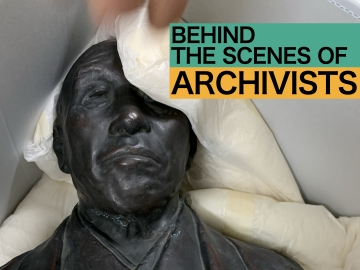
Behind the Scenes: The Daily Work of Archivists at Waseda University
To deeply understand and accurately research the history of Waseda University, reliable materials are essentia […]
Mon 29 Jul 2024
-
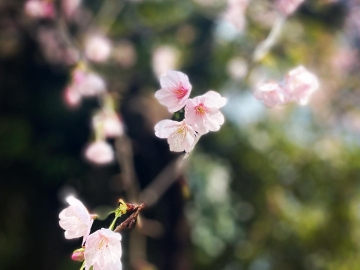
Who paid for your tuition? Letters from a father to his son
In 2021, the Waseda University History Museum received a donation of 232 documents, 227 of which pertain to ed […]
Fri 24 Mar 2023
-

Instructions for Use
Tue 14 Apr 2015
-

